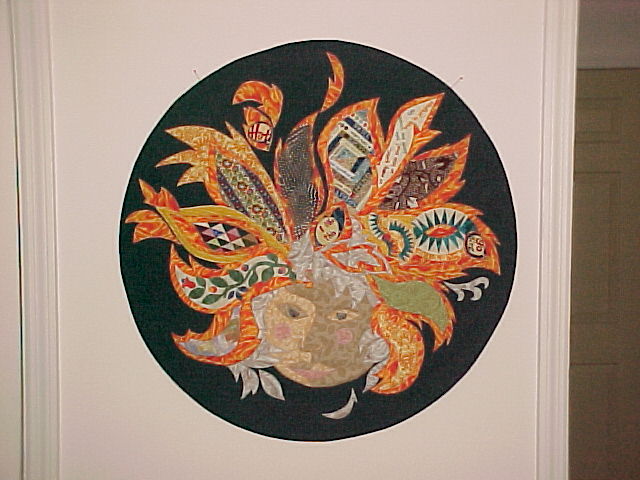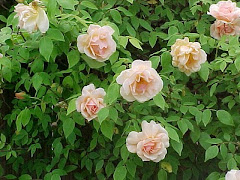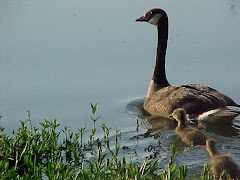The best way I know to manage this task is to work in batches. I prepare from five to seven fabrics (pressing and starching, squaring up) and then cut strips in the sizes I need.
Here are stacks of plaids and neutrals at the ready. I use a rotary cutter, cutting mat, and several rulers. Piecing is much easier when cutting is accurate.
I have a little cheat sheet off to the side to remind me how many strips of what size I need to cut from each fabric. It is easy to get mixed up even with a chart. (This is not my long suit.)
The strips will be pinned, stitched, and pressed in order; three rounds of this will produce the strip sets needed to compose a block. I work on about seven blocks at a time.
The strip sets are stacked and ready to stitch. I will feed the sets through the machine without stopping after each section. This is 'chain-piecing.'
Then it's off to the iron to press (not 'iron') each segment. The seam allowances are pressed in a direction that will not create bulky intersections.
I use a little spritzer filled with water and an aerosol of heavy starch when I press. The starch stabilizes the fabric--helpful when it comes to cutting.
The strip sets are ready for cutting. Each block requires one strip A, two strip B, and two strip C pieces.
And here are the pieces for two blocks. Back to the sewing machine and the iron--three round trips.
This is a finished block. It is 5" square. When it is seamed together with other blocks, it will finish at 4 and1/2 inches. It takes a lot of blocks and squares to make a quilt for a king-sized bed, needless to say.
The lighter neutral pieces will create a strong diagonal pattern when the quilt blocks and squares are joined.
It is a nice feeling when the chain of blocks comes through the machine. Batch complete!
Now....back to the sewing room!













No comments:
Post a Comment